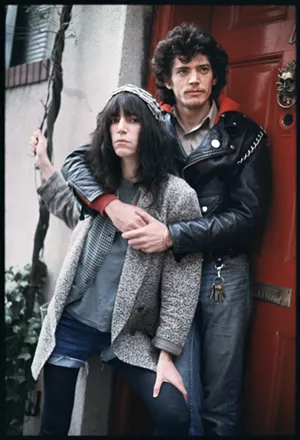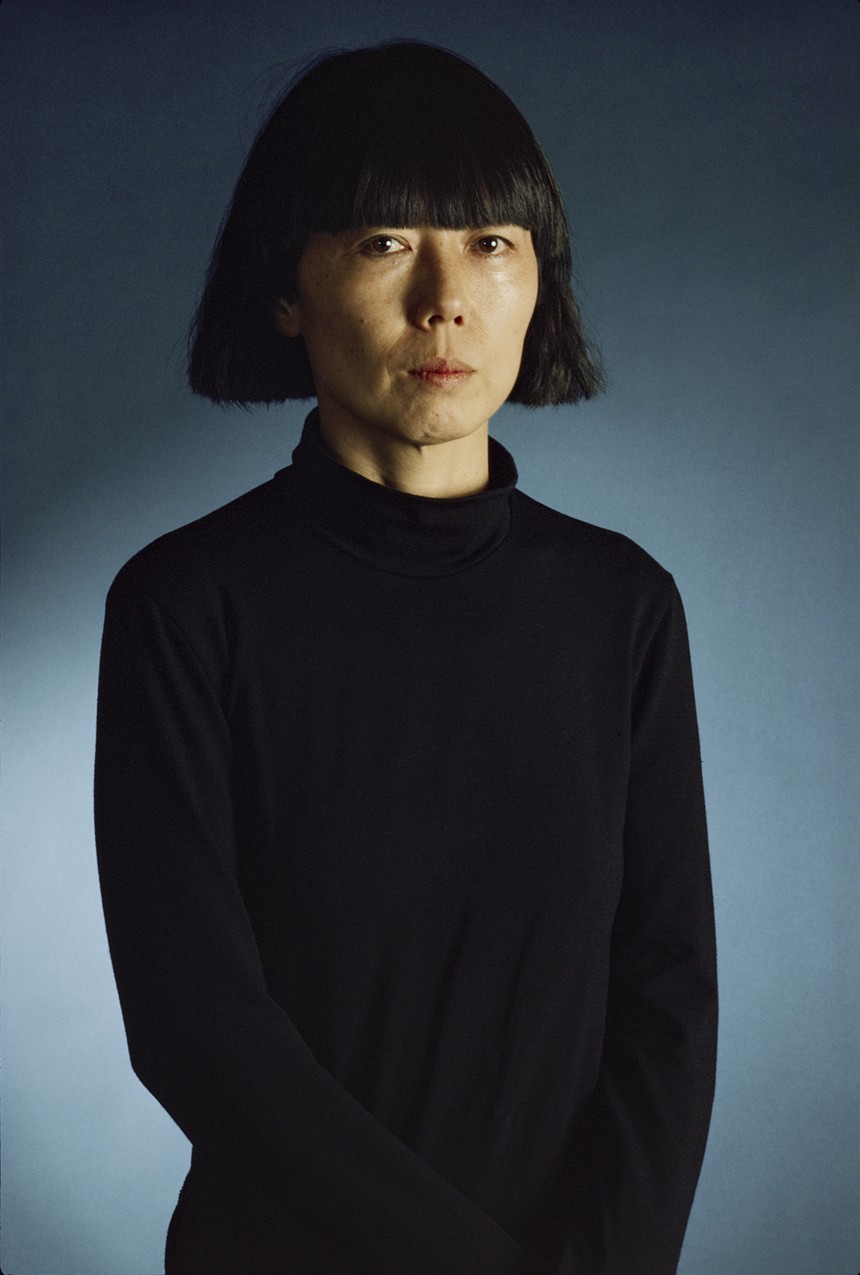Some cultural figures always have their finger on the pulse. Andy Warhol did, and so — one could argue — does Kate Simon.
The New York-based photographer even worked at Warhol’s Interview magazine for a spell, but it’s her portrait photography that has solidified her reputation. That iconic cover of The Clash’s debut album? It’s Simon’s. Classic images from Bob Marley’s Exodus tour? Simon again. She even managed to build a relationship with the notoriously persnickety writer William Burroughs, photographing him over and over during a 20-year period.
There are few icons of the 20th century Simon hasn’t shot. Her camera has snapped rock gods — Bowie, Iggy and Debbie Harry — designer Rei Kawakubo and artists Ed Ruscha, Damien Hirst and Louise Bourgeois. Simon doesn’t just capture her subjects but builds a bubble of trust, ensuring they’ll open up in a way they might not have in front of a different photographer’s lens.
An exhibition of Simon's works will be on display at Fort Works Art, a gallery at 2100 Montgomery St. in Fort Worth. Open through Dec. 17, The View from the Inside takes a micro view of Simon’s aesthetic, focusing specifically on the dazzlingly saturated color prints produced through the now-defunct Cibachrome process. Ranging from the 1970s to the mid-2000s, each image is a one-off, making them a true treasure for a serious collector.
“They’re such unique prints, and she can never remake them," says Fort Works owner Lauren Saba. "Kate might have run five to six Cibachromes, and only signed one and destroyed the rest because they’re not perfect. She’s extremely specific, and it’s the best of the best.”
Simon made her Fort Works debut in 2019 with Chaos and Cosmos, a "rock-and-roll extravaganza of 137 black and white images," as it was called. Saba says she intentionally curated Inside with a different focus, highlighting Simon’s technique and the icons she chose to capture.
“Kate has such a vast archive that narrowing it down to the particular images for the show was difficult, [so] I focused on groupings,” explains Saba. “There are nine artists, four [photos of] Marley, four Burroughs, then some fierce females, and some iconic men. All of the shots are of a more personal nature for Kate. They are either staged in the artist's living or working studios, her personal studio or shot on her travels.”
Simon’s approach to photography was in place from the very beginning. Growing up in Poughkeepsie, New York, she was drawn to the medium by her doctor father, a passionate hobbyist who often took her along on trips to the local photo supply shop.
“He would photograph me a lot. So, from the time of early childhood, I associated cameras, looking at cameras and being photographed as a gesture of love,” Simon recalls. “Being around something that was loving and intimate and powerful and affectionate. It just put a spell on me.”
Simon’s father passed away when she was just 17. While attending the Corcoran School of the Arts and Design in Washington, D.C., she was encouraged by a professor to take a gap year in Paris. This advice led to her dropping out and eventually landing in London, where she found herself smack dab in the early days of punk.
“I just had this hunch I was supposed to be a photographer, which sounds ludicrous, but I really did,” she says. “Once I got over to London, I was on retainer with this newspaper. I was a child — 23 years old — and I was photographing two shoots a day — everyone in music. There was so much action going on over there.”
Specializing in portraits, she captured friends and colleagues who later became bold-faced names. But instead of the more gritty, naturalistic technique of the time, Simon preferred to make her subjects look even better than life, a technique she carried over when she moved back to the U.S. in the 1980s.
“My inspiration comes from people like Cartier-Bresson, Edward Weston, Robert Frank and Paul Strand, that classic photojournalistic approach," Simon says. "I decided I was going to take all these music figures and apply this classic kind of beautiful George Hurrell lighting, this chiaroscuro lighting. I tried to shoot these figures that were culturally raw in this classic portrait way. In the first place, what I’m trying to do is make people look good.”
This is why everyone in front of her lens loved and trusted Simon so much. There's a palpable affection in the images that isn’t always evident in the work of other photographers.
“I think it’s a collaboration,” Simon says of her strategy. “You as a photographer have to bring your healthy self and your technical chops to the shoot, but then it becomes your communication with the subject and how well you connect with them.”
With images already in the permanent collection of The Museum of Modern Art, the Metropolitan Museum of Art, the National Portrait Gallery and the Andy Warhol Museum, Simon has focused in recent years on re-releasing her 2004 Rebel Music book, out next year from Genesis Publications. She’s also gathering work for a comprehensive anthology she hopes will be her masterwork.
But most important, Simon is feeling a subtle cultural sea change that may mean a busy decade of capturing the next generation of beautiful faces.
“I might be ahead of the curve, but I didn’t plan it that way. It’s just luck,” she says. “[And now] I’m thinking about new work. With me, anyway, I shoot a lot, then I just stop. Then I germinate for a while, and I come to this point I’m ready to shoot a lot again. And I’m at that point.”
[
{
"name": "Air - MediumRectangle - Inline Content - Mobile Display Size",
"component": "18855504",
"insertPoint": "2",
"requiredCountToDisplay": "2"
},{
"name": "Editor Picks",
"component": "17105533",
"insertPoint": "4",
"requiredCountToDisplay": "1"
},{
"name": "Inline Links",
"component": "18349797",
"insertPoint": "8th",
"startingPoint": 8,
"requiredCountToDisplay": "7",
"maxInsertions": 25
},{
"name": "Air - MediumRectangle - Combo - Inline Content",
"component": "17105532",
"insertPoint": "8th",
"startingPoint": 8,
"requiredCountToDisplay": "7",
"maxInsertions": 25
},{
"name": "Inline Links",
"component": "18349797",
"insertPoint": "8th",
"startingPoint": 12,
"requiredCountToDisplay": "11",
"maxInsertions": 25
},{
"name": "Air - Leaderboard Tower - Combo - Inline Content",
"component": "17105535",
"insertPoint": "8th",
"startingPoint": 12,
"requiredCountToDisplay": "11",
"maxInsertions": 25
}
]














